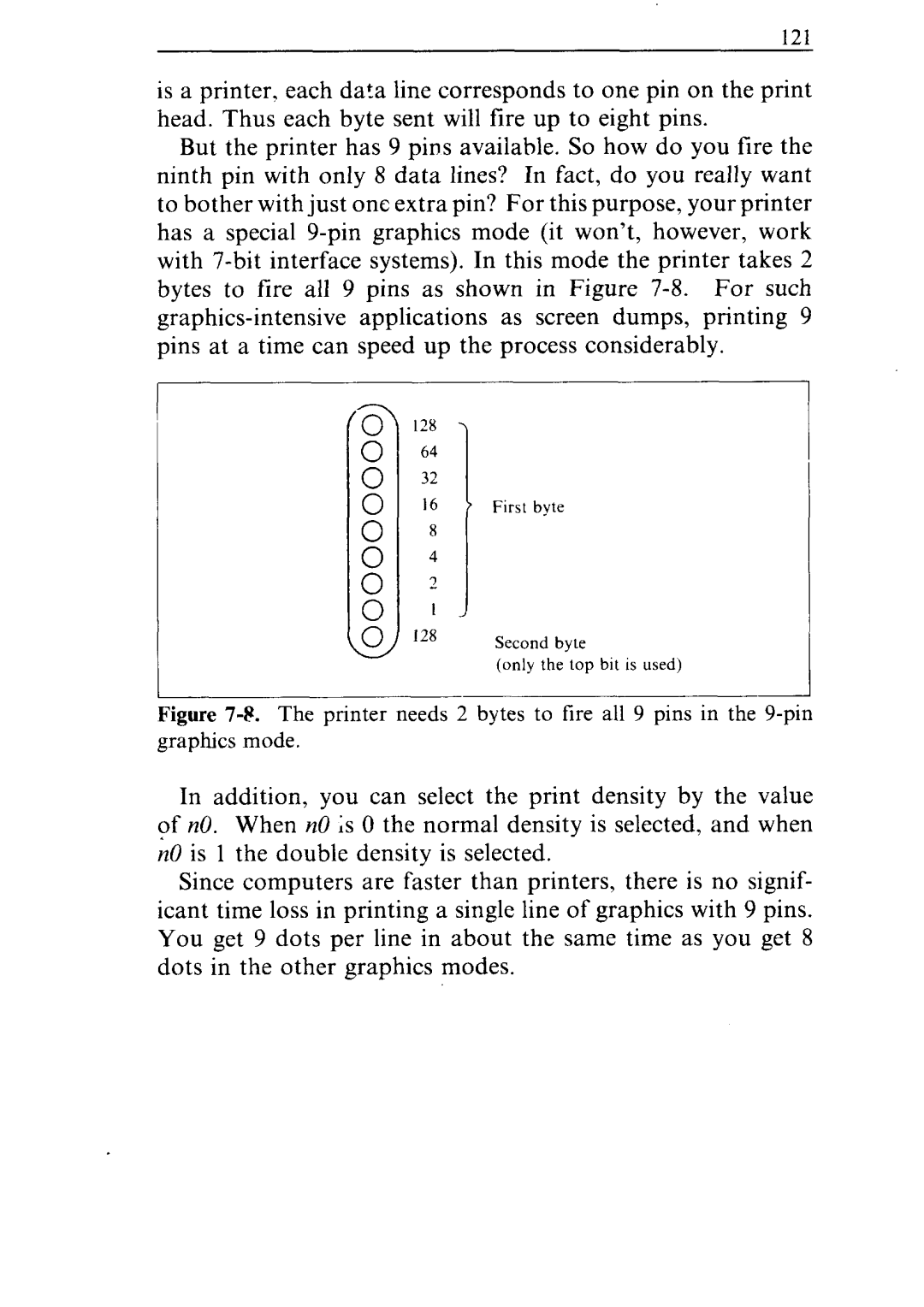
121
is a printer. each data line corresponds to one pin on the print head. Thus each byte sent will fire up to eight pins.
But the printer has 9 pins available. So how do you tire the ninth pin with only 8 data lines? In fact, do you really want to bother with just one extra pin? For this purpose, your printer has a special
g
g 0 0 0 0
128
64
32
16First byte
128
2 Second byte
(only the top bit is used)
Figure 7-8. The printer needs 2 bytes to fire all 9 pins in the 9-pin
graphics mode.
In addition, you can select the print density by the value of n0. When nO is 0 the normal density is selected, and when n0 is 1 the double density is selected.
Since computers are faster than printers, there is no signif- icant time loss in printing a single line of graphics with 9 pins. You get 9 dots per line in about the same time as you get 8 dots in the other graphics modes.
